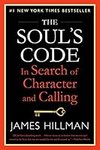
Saved by baja and
The Soul's Code

Saved by baja and
Clearly heroism is constellated. A myth of the hero calls from within his acorn.
We each embody our own idea, in the language of Plato and Plotinus. And this form, this idea, this image does not tolerate too much straying.
Among the people we refer to as Eskimos and others who follow shamanistic practices, it is your spirit, your free-soul, your animal-soul, your breath-soul.
For centuries we have searched for the right term for this “call.” The Romans named it your genius; the Greeks, your daimon; and the Christians your guardian angel. The
As Picasso said, “I don’t develop; I am.”
Or, if not the predictable highway, then the offbeat “journey,” accumulating and shedding incidents without pattern, itemizing events for a résumé organized only by chronology: This came after That. Such a life is a narrative without plot, its focus on a more and more boring central figure, “me,” wandering in the desert of dried-out “experiences.”
Everyone in therapy, or affected by therapeutic reflection even as diluted by the tears of TV-talk, is in search of an adequate biography: How do I put together into a coherent image the pieces of my life? How do I find the basic plot of my story? To uncover the innate
Our lives may be determined less by our childhood than by the way we have learned to imagine our childhoods. We are, this book shall maintain, less damaged by the traumas of childhood than by the traumatic way we remember childhood as a time of unnecessary and externally caused calamities that wrongly shaped us.
It seems to be a lesson of history that the commonplace may be understood as a reduction of the exceptional, but the exceptional cannot be understood by amplifying the commonplace.